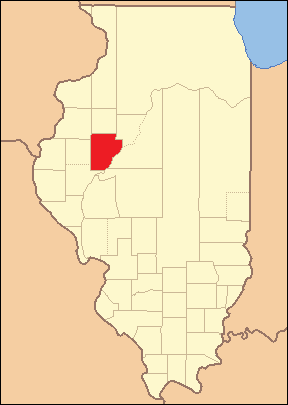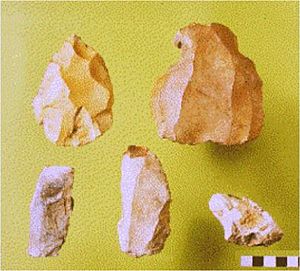Crable Site
The Crable Site is an exciting archaeological site in Fulton County, Illinois. It's located near the Illinois River and Anderson Lake. This special place was once home to Indigenous peoples during the Middle Mississippian period.
People lived here between about 900 AD and 1450 AD. Some of the oldest items found are shells from around 800 AD. The newest items are charcoal pieces from about 1420 AD. The Crable Site is sometimes called a "Southern Cult" site. This is because it was used during the Mississippian period. It also has artifacts and symbols that show people had started growing maize (corn) as a main food. Their society also had leaders, like chiefs.
People have studied and dug at the site many times. The first known report about the site was written in 1879. Edgar McDonald and his father dug there in the early 1930s. Later, the University of Chicago did more work. Dan Morse also excavated and researched the site in the 1950s.
Contents
Where is the Crable Site Located?
The Crable Site is found on high ground, like bluffs and ridges. It's only a short distance from a natural spring. This spring likely gave the people of the Crable Site plenty of fresh drinking water.
Many mounds are part of a "mound field" at the site. The biggest mound is about 12 feet tall and 60 feet wide. The entire site covers about 100 acres. However, most of the interesting artifacts were found in a smaller area. This area is less than 25 acres and is close to the mound field.
What Did Archaeologists Find?
Archaeologists have found four cemeteries at the Crable Site. The largest cemetery is thought to have more than 200 bodies. Most bodies were buried lying flat in an extended position. Some graves even had two bodies buried together. Many children were buried in these cemeteries. This suggests that many young children did not survive to adulthood.
The burial sites were not all the same. There was no clear pattern in how the bodies were placed. Also, the items buried with them varied a lot.
Special Burials and Items
Some people were buried with special items. These included copper beads and ornaments. Others had engraved shell pendants. Both of these types of items are common in Southern Cult societies from this time. The shells found were from clams and turtles. They likely came from the nearby lake and river.
McDonald dug a trench into the center of the largest mound. He found pits filled with interesting things. These included parts of animal-shaped figures, bone hair ornaments, and decorated pots. He also found pieces of fire basins and antler bones.
Inside the mound, two hut structures and altars were discovered. The way the burial sites were placed around the mound suggests something important. It shows that this large mound was likely a temple mound.
Tools and Pottery
Many Potsherds (broken pieces of pottery) and flint tools were also found. The designs on the pottery pieces were very similar to those found across the wider Mississippian region. These designs included square crosses and suns. The flint tools were mainly spears and knives. Some of these tools even had special notches.



